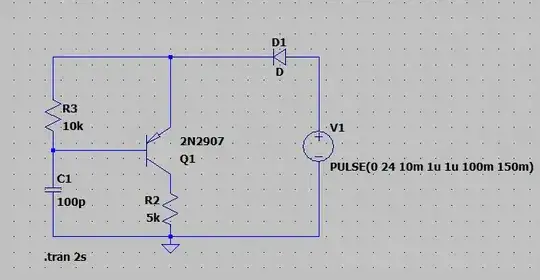In a simple PNP switch circuit, any capacitance on the base will make the transistor turn on when the 24V (V1) is first applied. It'll stay on until the cap charges. I imagine there will always be some stray capacitance, especially if the transistor is being controlled from another pcb with a long cable. How can I stop the brief triggering at power on? Is the only solution to minimize the capacitance until the charge time is faster than the transistor can react?
I don't have an actual cap, just estimating stray capacitance. Also, how could you add a filter to the base without leading to false triggering at power on?
